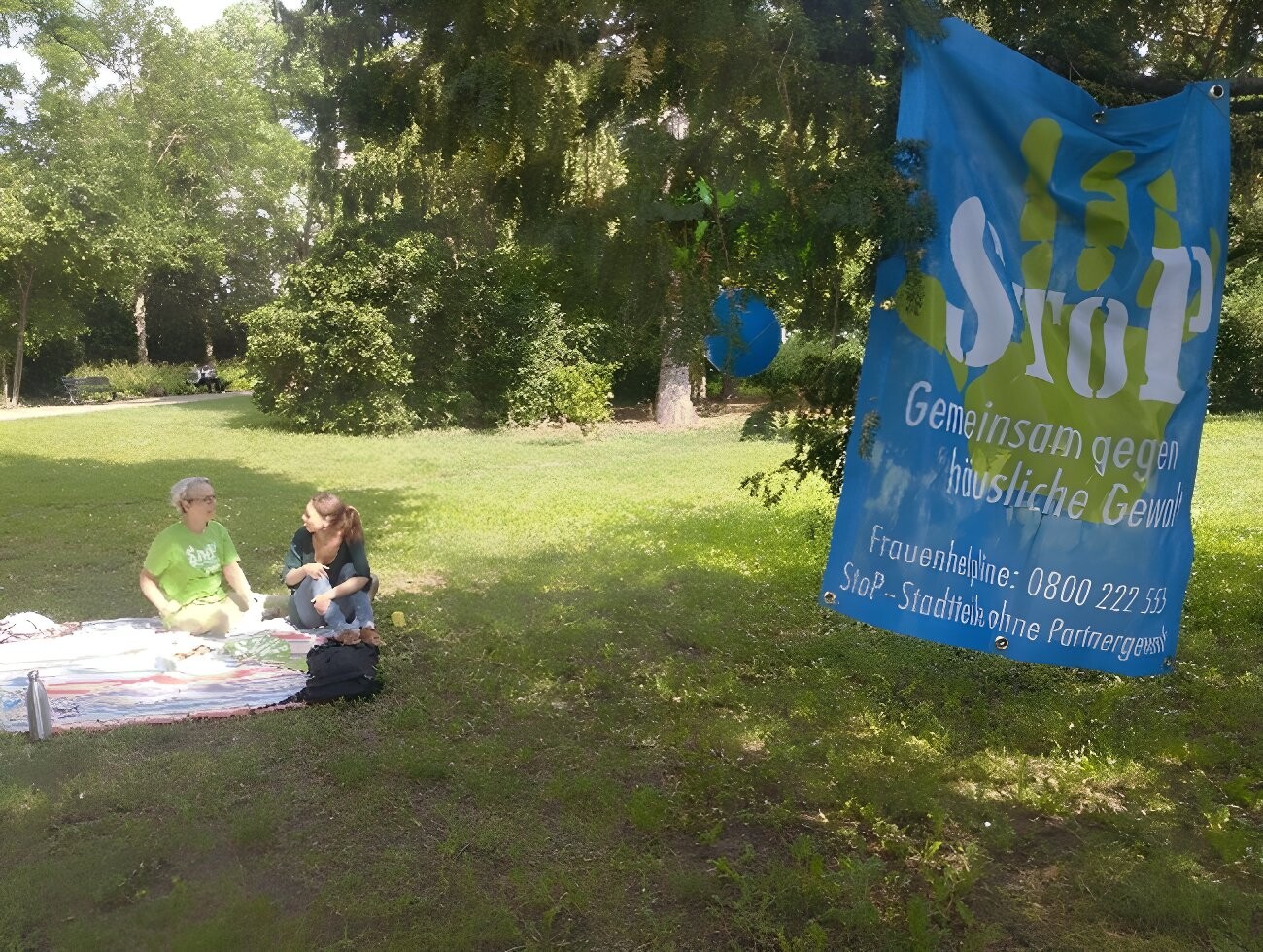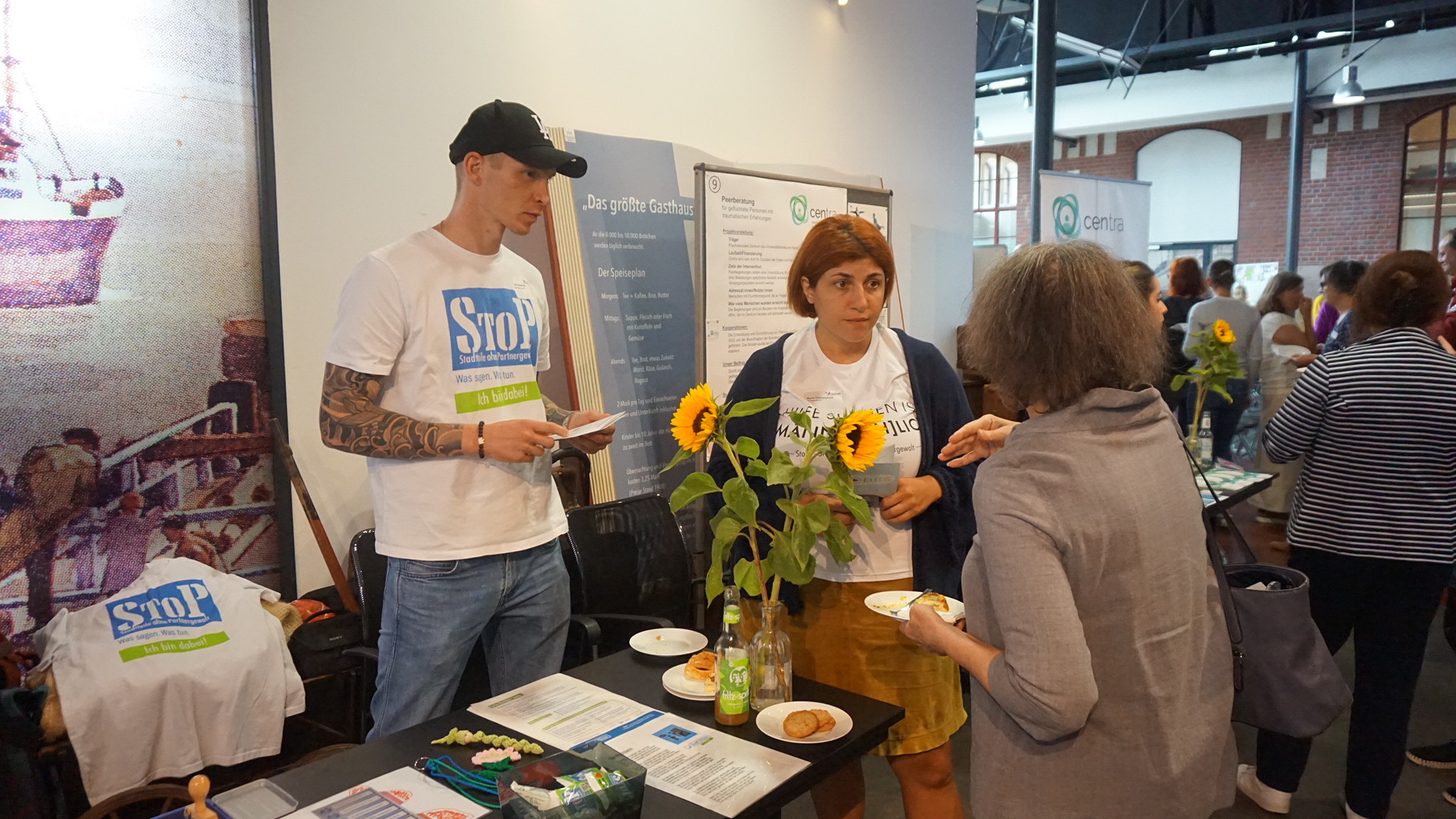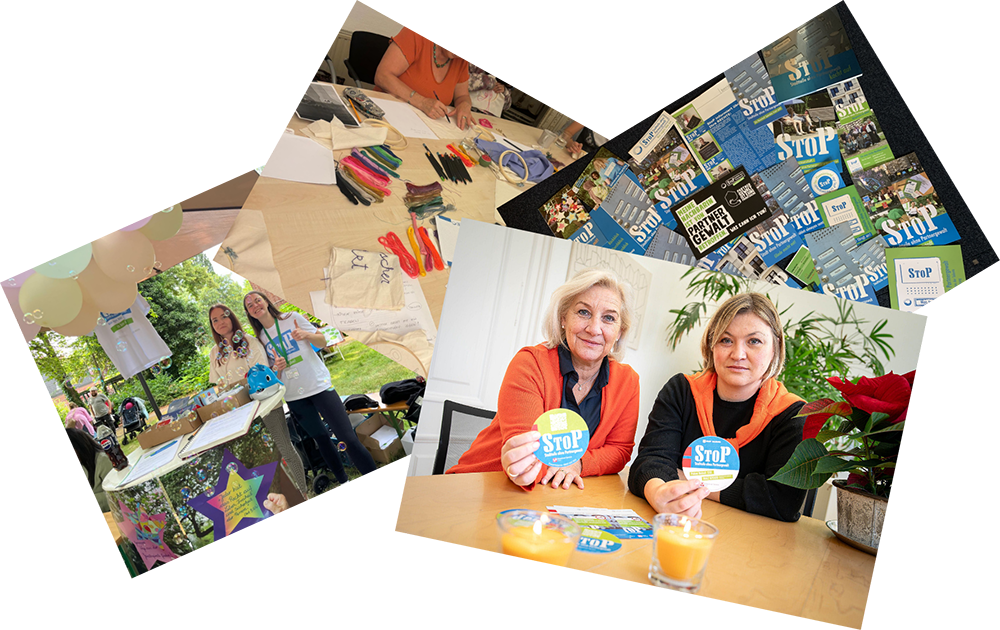Why
The physical environment, social structure, infrastructure, demographics, cultural traditions, economy, history and the image of a local community affect the well-being of its residents, their values and attitudes, their self-esteem or the way they relate to each other. To start organising and achieve social change, i.e. to stop domestic violence in a community, an organiser must know and understand the community well.
What
To really get to know a community, a variety of tools are needed:
The one we focus on here is the “exploratory community walk”. You observe and map while a) walking and b) “hanging out” in a lively neighbourhood space (see also the StoP Community Assessment Guideline). The exploratory walk provides a first, subjective impression of the local community to be described. As you walk through the neighbourhood, you will develop your own picture of the housing and living conditions of the people there, get a sense of the social climate and a first impression of the organisations and institutions that are part of it. In addition you will also need to…
- look at statistics on demographics, socio-economic situation, voting patterns, education levels, existing institutions/providers of education, health, leisure, shopping or technical infrastructure.
- find out (observe, ask) about formal and informal community leaders and hold in-depth one-to-one interviews with them. (link to resource 2 one-to-one in this step)
- conduct community surveys using action research principles.
Objectives
- describe the community from an internal perspective and with the involvement of local actors
- get to know and understand the local community in a holistic way
- identify formal and informal local leaders and potential allies
Facilitators guide
The exploratory community walk should always be the first step in a local community assessment, to gain a first impression of the area without being influenced by statistical data and other sources of information. Try to imagine yourself as a blank slate about the community, be as open as possible. Check your own image and attitude towards the community and try to be aware of any prejudices you may have. In the next step, the picture of living and housing conditions can be compared and supplemented with the existing data, statistics and, if necessary, modified or corrected.
Since the neighbourhood or community to be explored will certainly present a different picture in the morning than in the afternoon or evening hours, and since life in the public space will also be different on weekdays than on Sundays, the community exploration must be carried out several times to arrive at an initial, generalisable, preliminary statement about the situation in the area. Besides walking, watching and mapping also use the participant observation method (Jorgensen 2020).
Do it on your own. In a team or group, it is much harder to focus on the environment, on the community. It is better to split up. Several people could do either the same routes or a different part of the community and then meet later to compare and discuss their impressions and results.
Time and people needed
StoP staff/organisers, early members of the StoP network. The time needed depends on the size of the neighbourhood, allow at least 2 hours for each exploratory walk/observation. The community as a whole and community/local leaders.
Steps / Action
- Clarify: What exactly is the community you want to explore? StoP usually refers to a local community. A local community, i.e. a geographical community, is usually made up of several other communities, such as religious and ethnic communities, or communities of interest, which may overlap. What is the size, location and are the boundaries of the area you want to do an exploratory walk?
- What would be a good space to do a participant observation?
- Download the StoP community assessment guideline, study it.
- Set a time and date.
- Do the exploration, take notes, pictures.
- Write a documentation, safe it, share it with colleagues, fellows.
- Look into publicly available statistics, local newspapers, church and association bulletins, or neighbourhood archives
- In addition: ask longtime residents to give you a tour of the neighbourhood, ask about their views.
- Later (Step 3): Ask the members of your Stop community group about the neighbourhood and share your impressions and experiences. Explore the community together doing action research using the StoP door-knocking survey.
Material
- StoP community Assessment Guideline
- Pen and paper, cellphone to document findings
Experiences
“At the start of the Assess phase, the initiating organizers/organization and any early network members converge around a shared analysis of the context for research—making foundational programmatic decisions, getting to know the community, aligning around the principles of community organizing, and working together in that spirit.”
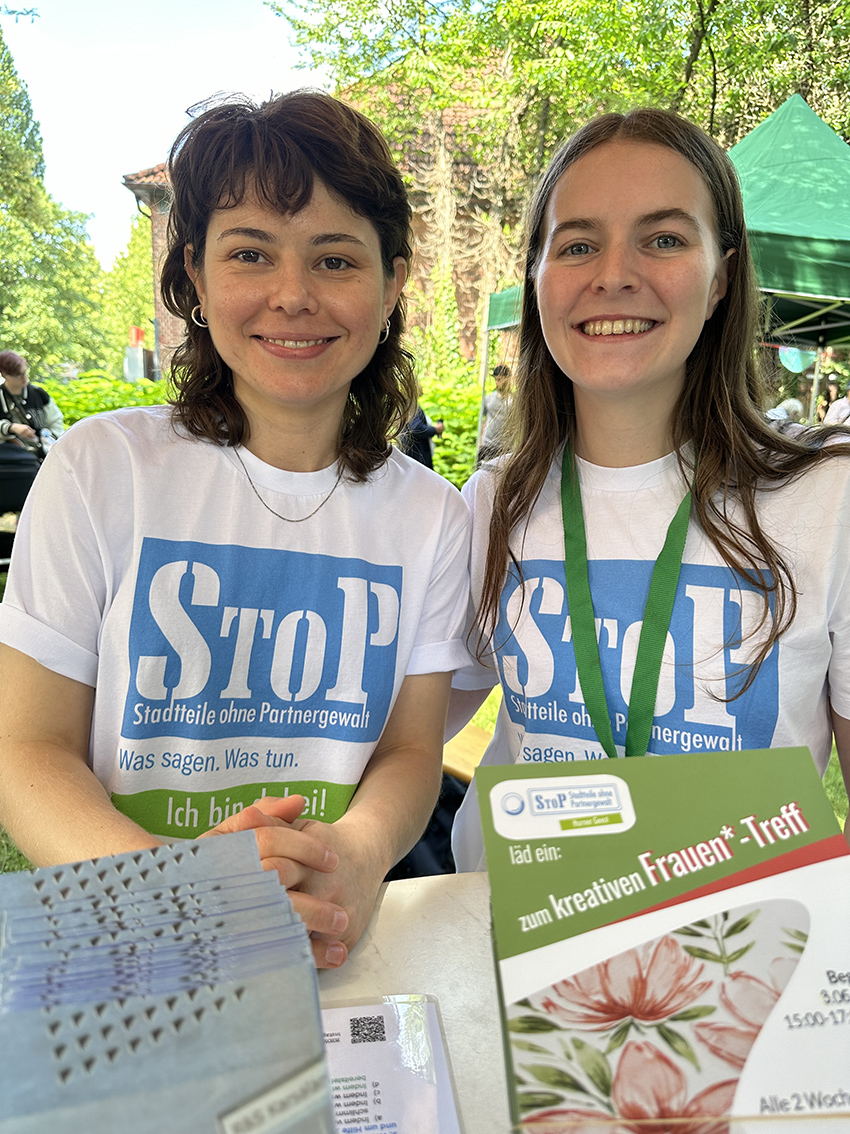
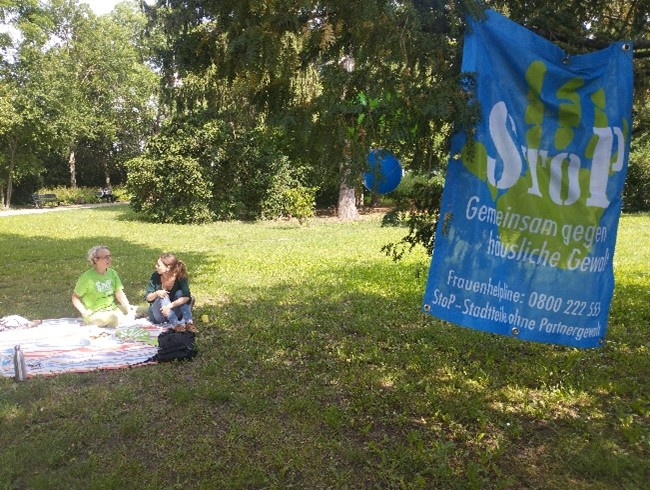
Links
-
Helpful materials from the Community Tool Box:
-
References
-
Jorgensen, D. L. (2020). Principles, approaches and issues in participant observation. Routledge.
